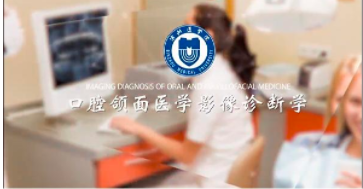
当前课程知识点:Introduction of New Structural Regional Economics > 4. Principals of New Structural Regional Economics > 4.1 Regional Externality > 4.1 Regional Externality
返回《Introduction of New Structural Regional Economics》慕课在线视频课程列表
返回《Introduction of New Structural Regional Economics》慕课在线视频列表
欢迎大家继续学习
新结构区域经济学导论
我是南昌大学李汝资
本节课开始
我们重点学习新结构区域经济学的
5个基本原理
具体来看
包括区域外部性原理
禀赋结构转换原理
有为政府边界原理
空间最优均衡原理
动态螺旋演进原理
这一节课主要介绍
区域外部性原理
区域外部性
源于经济学中的外部性概念
外部性的概念最早是由
马歇尔和庇古
在二十世纪初提出的
它是指一个经济主体
可能是生产者 也可能是消费者
在经济活动中对其他经济主体的福利
产生有利或者不利的影响
这种有利或者不利的影响
带来的收益或者成本
都不是生产者或者消费者所获得或承担的
而是一种经济主体
对另一种经济主体非市场性的附带影响
这幅图展示了
私人成本和社会成本的差异带来的外部性
而这种差异 主要是由市场失灵导致的
因此 外部性理论
成为解释人类活动
引发的资源环境问题的
有效分析工具
通常与社会福利和政府规制
结合来一起研究
那么区域外部性可以看成
是外部性的一种特殊形式
强调区域的
经济理性行为
对其他区域利益的非市场化影响过程
或准经济理性行为
区域外部性存在的前提是要素流动
在要素可以自由流动前提下
一个区域的经济活动
才可能对其他区域产生影响
而针对该影响
由于存在市场失灵
一般需要政府进行干预
因此 区域外部性的基础理论
涉及到区域差异理论
区域空间关联理论
地理运动理论
公共规制理论等
那么 区域外部性通过哪些途径实现呢
接下来 我们具体介绍
区域外部性独特的表现形式
包括环境影响 生态服务
关联发展等
首先是环境影响
比如大气污染 水污染等等
这些污染物将伴随空气或者河流
由一个区域转移到其他区域
第二是生态服务
如清洁水 碳汇等
以碳汇为例
人们通过植树造林
将吸收大气中的二氧化碳
将二氧化碳集中固定在这一区域
这不仅会减少本地的二氧化碳暴露
也会有效减少其他区域的二氧化碳
然而
如果其他地区二氧化碳排放增加
会影响其他区域的二氧化碳暴露
这就成为环境污染物的外部性影响
第三是区域发展关联
比如中心城市 区域贸易
交通网络等等
以区域贸易为例
区域贸易是
要素 商品或服务的跨区域交易行为
但在这个过程中
将不免嵌入其他要素的流动
例如 一些高技术产品的贸易
可能将商品生产地的
技术转移到
商品消费地
同样的 一些商品中可能
附加潜在的污染物
比如一些电子器件中含有重金属
在贸易发生后
该商品中的重金属
将由生产地转移到消费地
再以中心城市为例
城市建设不仅仅为本地消费者
提供软硬基础设施
消费 教育 医疗 休憩等
还会为其他地区消费者提供服务
此外 一座城市的经济发展
还可能为邻近城市发展
提供人力资本 资金 技术
等服务
这些都是区域外部性重要的
表现形式
当然 上述区域外部性的形成
需要一定的媒介传播
就像大气污染物会通过空气传播一样
同时
这种区域外部性类型可能是正向的
也可能是负向的
当然 它们还涉及不同的利益群体
这幅表向我们展示了
区域外部性的主要形式
地理媒介类型
利益关系和区域效应
我们可以看到 环境影响
可能产生正的或者负的外部性
而生态服务
一般提供正的区域外部性
发展关联则可能
既有正的外部性 又有负的外部性
但是 无论是环境影响
生态服务 发展关联
总是存在区域利益的矛盾
比如环境利益
和经济利益的矛盾
经济利益和生态利益的矛盾
区域间经济利益的
协同或者矛盾
那么 区域外部性是如何发生作用呢
一般而言 区域外部性主要源于
产权区域
和要素地理运动的存在
二者缺一不可
一方面 产权区域
将地理空间分割为若干部分
它们有各自的行为主体 是不容侵犯的
犹如美国或者中国的两座城市
在没有产权界定的情况下
它们可能是不分彼此的
明确产权后
它们就有了
各自的领地 法律等等
因此 产权区域 是现代区域发展的
基本规律
而地表物质的跨区域流动是
物质内在循环规律所在
二者的相互作用必然
导致区域外部性的产生
换句话说
产权区域和地理运动
是构成区域外部性产生的
客观事实
狼和小羊的故事场景可以帮助我们
更直观的理解区域外部性的发生机制
我们假设羊在上游
狼在下游
由于河水是流动的
羊会弄脏狼喝的水
而狼又具有领地意识
这里领地意识
等同于产权
因此狼找到借口指责羊
但如果河水是静止的
或者狼并没有领地意识
那么也就不存在这个故事
但反过来
如果羊也有领地意识
由于狼要喝干净的水
而不让羊喝水
羊也可以提出一些建议
比如
狼需要给它一些物质补偿
其实 这个故事
与现实中的流域生态补偿相似
明确区域外部性的作用机制
我们进一步了解它的分析范式
首先是以区域外部作用的
地理事实为基础
我们可以通过对
地理要素流动的考察
判断区域外部作用的
过程格局和作用范围
形成区域间利益关系的地理事实依据
其次 我们将区域利益主体引入到
经济学中的产权效率
成本收益的分析框架内
判别区域外部作用
对不同区域主体的影响效应
从而形成区域间的外部性问题
第三 考察区域外部性
必须以空间尺度为前提
这是由于 在宏观尺度范围内
产权区域可能是存在的
例如 跨流域的污染问题
但是 假设同样是该流域
仅存在于某一座城市内部
上述跨流域的污染问题
就不存在
而可能变为
不同个体之间的外部性问题
最后 我们可以从
上述视角来审视公共物品
以寻求排污权交易 征税
和补贴管制等外部性治理手段
使之更加贴近现实的区域问题
接下来我们介绍本节课的
第二个重点内容——空间溢出机制
由区域外部性 实际上我们就可以把它
扩展到空间溢出机制
具体来看 可以从三个方面展开
第1种就是具有
正外部性 外溢效应大的地区
它会形成良性的因果循环积累效应
不仅有效地促进
本地区的经济发展
还能依靠
这种正向外部性造成的空间溢出
促进周边地区的经济发展
比如城市群一体化区域
会给周围小城市带来一些资源
第2种类型是具有正外部性
但是外溢效果不明显的地区
那么只能促进
本地区的经济发展
并不能带动
周围地区的经济发展
这种类型往往是
典型的中心-外围结构
第3种是具有
负外部性溢出效应比较大的地区
那么它会通过空间溢出效应
造成周边地区
也承担这种负的经济外部性
造成区域经济之间的恶性循环
典型的是环境污染
正是因为区域经济
具有明显的开放性
才能够由区域外部性
带来空间溢出
由于区域经济系统之间
存在着
广泛的商品贸易 技术扩散
要素流动等等各种经济联系
因此区域之间存在着广泛的关联效应
同时区域之间的空间溢出效应
对相邻区域的经济增长
也存在着明显的贡献
那么 劳动力市场共享 市场潜能
前后向关联等等所导致的
外部性与经济集聚之间的
内生互动
会对区域外部性所带来的空间溢出
产生强化或者是综合作用
在不完全竞争
和规模报酬递增的条件下
外部性的来源要更加明确
有着清晰的福利效应
而这种福利效应
引起正向或负向的空间溢出效应
对经济发展将会产生重要作用
最后是本节课的一些参考文献
好 以上是对
区域外部性原理介绍
希望通过本节课学习
大家可以理解什么是区域外部性
以及区域外部性带来的空间溢出效应
本节课就到这里 谢谢大家
-1.1.1 China's Physical Geography
--1.1.1 China's Physical Geography
--1.1.1 Test
-1.1.2 Hu Line
--1.1.2 Test
-1.1.3 Economic catch-up of the central and western China
--1.1.3 Economic catch-up of the central and western China
--1.1.3 Test
-1.2.1 Overview of China’s economy
--1.2.1 Overview of China’s economy
--1.2.1 Test
-1.2.2 Coastal special economic zones in China
--1.2.2 Coastal special economic zones in China
--1.2.2 Test
-1.2.3 Western Development strategy in China
--1.2.3 Western Development strategy in China
--1.2.3 Test
-1.2.4 Northeast China Revitalization Plan
--1.2.4 Northeast China Revitalization Plan
--1.2.4 Test
-1.2.5 Rise of Central China Plan
--1.2.5 Rise of Central China Plan
--1.2.5 Test
-1.3.1 Coordinated regional development and main functional area
--1.3.1 Coordinated regional development and main functional area
--1.3.1 Test
-1.3.2 China’s urban agglomeration pattern and the economic effect
--1.3.2 China’s urban agglomeration pattern and the economic effect
--1.3.2 Test
-2.1 Agricultural location theory
--2.1 Agricultural location theory
--2.1 Test
-2.2 Growth Pole Theory
--2.2 Test
-2.3 The Stages of Economic Growth
--2.3 The Stages of Economic Growth
--2.3 Test
-2.4 Pole & Axis System Theory
--2.4 Pole & Axis System Theory
--2.4 Test
-2.5 Center-periphery theory
--2.5 Test
-3.1 Why New Structural Economics
--3.1 Why New Structural Economics
--3.1 Test
-3.2 The Theoretical Foundation of New Structural Economics
--3.2 The Theoretical Foundation of New Structural Economics
--3.2 Test
-3.3 Does New Structural Economics Offer Explanations?
--3.3 Does New Structural Economics Offer Explanations?
--3.3 Test
-3.4 Application for Industrial Policy
--3.4 Application for Industrial Policy
--3.4 Test
-3.5 Does the idea of New Structural Economics work?
--3.5 Does the idea of New Structural Economics work?
-4.1 Regional Externality
--4.1 Test
-4.2 Endowment Structure Transformation
--4.2 Endowment Structure Transformation
--4.2 Test
-4.3 Role Boundary of Facilitating Government
--4.3 Role Boundary of Facilitating Government
--4.3 Test
-4.4 Spatial Optimal Equilibrium
--4.4 Spatial Optimal Equilibrium
--4.4 Test
-4.5 Evolution of Dynamic Spiral
--4.5 Evolution of Dynamic Spiral
--4.5 Test
-5.1 China's Development Experience and OFDI
--5.1 China's Development Experience and OFDI
--5.1 Test
-5.2 Commonness and New Trends of Developing Countries
--5.2 Commonness and New Trends of Developing Countries
--5.2 Test
-5.3 Industrialization of Developing Countries with Special Economic Zones
--5.3 Industrialization of Developing Countries with Special Economic Zones
--5.3 Test
-5.4 Growth Identification and Facilitation Framework (GIFF)
--5.4 Growth Identification and Facilitation Framework (GIFF)
--5.4 Test
-5.5 GIFF in Practice and Case Studies (Nigeria, Benin and Uzbekistan)
--5.5 GIFF in Practice and Case Studies (Nigeria, Benin and Uzbekistan)
--5.5 Test
- 6.1.1 The global competitiveness model and its theoretical basis
-- 6.1.1 The global competitiveness model and its theoretical basis
--6.1.1 Test
- 6.1.2 The Brief introduction of the Theory of County Economic Competitiveness
-- 6.1.2 The Brief introduction of the Theory of County Economic Competitiveness
--6.1.2 Test
- 6.2.1 Situation of the Chinese Counties: Development Stage、Location Characteristics and Natural Res
-- 6.2.1 Situation of the Chinese Counties: Development Stage、Location Characteristics and Natural Res
--6.2.1 Test
- 6.2.2 The other Situation of the Chinese Counties and The Case of Qinyuan Pencil
-- 6.2.2 The other Situation of the Chinese Counties and The Case of Qinyuan Pencil
--6.2.2 Test
- 6.2.3 The County's Development Strategy (comparative advantage) Analysis
--6.2.3 The County's Development Strategy (comparative advantage) Analysis
--6.2.3 Test
-6.2.4 The Other County's Development Strategy (comparative advantage) Analysis and Conclusion
--6.2.4 The Other County's Development Strategy (comparative advantage) Analysis and Conclusion
--6.2.4 Test
-6.3.1 The Case of Jinjiang and Guanling
--6.3.1 The Case of Jinjiang and Guanling
--6.3.1 Test
- 6.3.2 The Case of Qianyang and Changzhi
-- 6.3.2 The Case of Qianyang and Changzhi
--6.3.2 Test
- 6.3.3 The Case of Hotan
-7.1.1 Targeted Poverty Alleviation Strategy
--7.1.1 Targeted Poverty Alleviation Strategy
--7.1.1 Test
-7.1.2 Cases of the Old Revolutionary Base Areas
--7.1.2 Cases of the Old Revolutionary Base Areas
--7.1.2 Test
-7.2 Growth Identification and Industrial Policy: Jilin Revitalization
--7.2 Growth Identification and Industrial Policy: Jilin Revitalization
--7.2 Test
- 7.3.1 The Carrying Capacity of Yangtze River Economic Belt
-- 7.3.1 The Carrying Capacity of Yangtze River Economic Belt
--7.3.1 Test
- 7.3.2 The Development of Yangtze River Economic Belt
--7.3.2 The Development of Yangtze River Economic Belt
--7.3.2 Test
-7.4 Growth Identification and Facilitation: Integration of Yangtze River Delta and High-quality Deve
--7.4 Growth Identification and Facilitation: Integration of Yangtze River Delta and High-quality Deve
--7.4 Test
-Final examination


